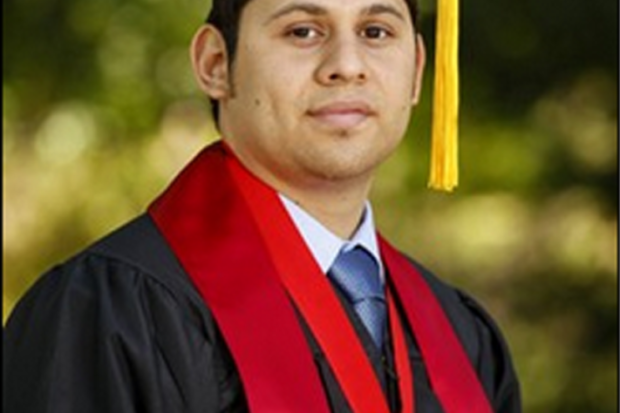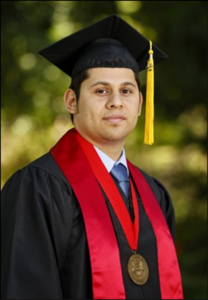
By George B. Kauffman

Science magazine, the weekly flagship journal of the American Association for the Advancement of Science, ran a free special issue (April 19, 2013) featuring “Grand Challenges in Science Education,” a critical set of the problems and exciting opportunities now facing science education on a global level (http://teachscience4all.wordpress.com/2013/04/23/science-free-special-issue-grand-challenges-in-science-education).
Through a mixture of news, reviews, perspectives, education, forums and an editorial, the question, “Why would anyone who is not a scientist care about science education?” was asked and answered, and substantive suggestions were offered on how to proceed.
Yet, convincing the public of the importance of STEM (Science, Technology, Engineering and Mathematics) education will require more than explaining what the research shows or finding ways to scale up best practices to reach billions of students who are entitled to a high-quality education.
For scientists, advances arrive at such a rapid clip that last year’s knowledge barely scratches the surface of what is needed next year. Simultaneously, larger and more diverse student populations clamor for access to knowledge. Not only will the scientific workforce need skills and knowledge that we haven’t even heard of yet, but also all global citizens will need to be better informed. Turning the fire of the natural curiosity of students into effective, flexible and well-grounded outcomes will take a concerted effort by many different actors. Among them, scientists must play a central role.
Here are the grand challenges:
- Use technology to improve pedagogy, management and accountability.
- Improve access to and the quality of pre- and post-primary education.
- Develop appropriate policies for regulating and supporting the private sector in education.
- Develop an understanding of how individual differences in brain development interact with formal education.
- Adapt learning pathways to individual needs.
- Create online environments that use stored data from individual students to guide them to virtual experiments appropriate for their stage of understanding.
- Determine the ideal balance between virtual and physical investigations for courses in different subject areas.
- Identify the skills and strategies teachers need to implement a science curriculum featuring virtual and physical laboratories.
- Identify the underlying mechanisms that make some teacher professional development (PD) programs more effective than others.
- Identify the kind of PD programs that best prepare teachers to meet the challenges of the Next Generation Science Standards (NGSS).
- Harness new technologies and social media to make high-quality science PD programs available to all teachers.
- Help students explore the personal relevance of science and integrate scientific knowledge into complex practical solutions.
- Develop students’ understanding of the social and institutional basis of scientific credibility.
- Enable students to build on their own enduring, science-related interests.
- Shift incentives to encourage education research on the real problems of practice as they exist in school settings.
- Create a set of school districts where longstanding, multidisciplinary teams work together to identify effective improvements.
- Create a culture within school systems that allows for meaningful experimentation.
- Design valid and reliable assessments reflecting the integration of practices, cross-cutting concepts and core ideas in science.
- Use assessment results to establish an empirical evidence base regarding progressions in science proficiency across K-12.
- Build and test tools and information systems that help teachers effectively use assessments to promote learning in the classroom.
To these 20 challenges, Bruce Alberts, Science’s editor-in-chief, adds his own three additional challenges:
- Build education systems that incorporate the advice of outstanding full-time classroom teachers when formulating education policy.
- Harness the influence of business organizations to strongly support the revolution in science education specified in the Next Generation Science Standards.
- Incorporate active science inquiry into all introductory college science classes.
Locally, these challenges have been accepted and largely met. The Fresno State College American Chemical Society Student Affiliate Chapter, for which I served as the faculty sponsor from 1956 to 1966, has been rechristened the CHEM Club (www.fresnostate.edu/academics/stem/resources/chem-club.html, a site with numerous links, e.g., for K-12 students, K-12 teachers, prospective math and science teachers). Under its co-advisers, Drs. Melissa Golden (559-278-6822; mgolden@csufresno.edu) and Joy J. Goto (559-278-2530; jgoto@csufresno.edu), the CHEM Club has grown into a model for student organizations on campus.
CHEM Club members have worked to increase scientific literacy not only among Fresno State students but also among the people of California’s Central Valley through a number of outreach activities rooted in STEM. While working to share the passion they have for their chosen field of study, they have been able to acquire grant money to strengthen their efforts and have been recognized on the national level for their achievement and dedication.
Nearly three years ago, the Fresno State Chemistry Department and the CHEM Club began working with Discovery Center, a local nonprofit science and nature educational center (1944 N. Winery Ave., www.thediscoverycenter.net). The club began by volunteering to work the center’s Saturday Science program, which allows local children to be exposed to the sciences in a casual and inviting environment.
As interest increased, the club began to develop its own STEM outreach activities and grew to host two Saturday Science days each month. As the club’s STEM efforts grew, a kid-friendly mascot known as Nick L. Mole was purchased. This recognized symbol of the club helps to soften the image of the sciences from the public’s perspective and begins to develop a whimsical relationship with children during its outreach events.
In the summer of 2011, Fresno State Chemistry Department faculty and staff attended the Engaged Department Institute for the Sciences workshop at the CSU Chancellors’ office in Long Beach, where, using the club’s Saturday Science work as a foundation, they applied for and received a grant to fund the department’s STEM/service learning involvement in the community. Matching funds were also provided by the Jan and Bud Richter Center for Community Engagement and Service-Learning (www.fresnostate.edu/academics/cesl), thus increasing the opportunities that the club can provide to children in the Central Valley.
In the fall of 2012, the CHEM Club began to reach out to local elementary and middle schools from underrepresented minorities in the sciences. According to Dr. Goto, “This is a unique facet of a student science club that serves more than just their peers and campus but goes beyond through meaningful service learning activities.”
To open up more opportunities for Fresno State chemistry students, the CHEM Club has developed a program called the Chemistry Career Seminar Series (C2S2). Supported by an Instructionally Related Activities (www.fresnostate.edu/studentaffairs/asi/funding/ira.html) grant from Associated Students, Inc. (ASI; www.fresnostate.edu/studentaffairs/asi), the C2S2 has brought successful career chemists and professionals in related fields to Fresno State to share their experiences with students.
Through faculty recommendations and student requests, the club has contacted scientists from industry, government and private enterprise to give Fresno State students a fresh and inviting perspective of their career opportunities. Since its spring 2012 inception, this program has brought several professional chemists from across the country to speak to students about what lies before them after graduation. Speakers have included skin care chemists, forensics scientists and a Hollywood special effects artist/pyrotechnician. In the spring of 2013, the club applied for another year of funding for this grant through ASI.
While attending the 245th National ACS Meeting in New Orleans April 7–11, the CHEM Club shared with other universities some of their ideas that have made them a successful club, participated in an outreach event at the Audubon Zoo and presented the results of the research they participated in at Fresno State. At the end of the undergraduate part of the week’s program, the CHEM Club accepted the ACS’s Outstanding Chapter Award, the highest honor given to student organizations (the club’s third time in a row to win it). The club also received the ACS Green Chemistry Student Chapter Award.
Dr. Golden stated, “The students worked really hard to put together many amazing events all year to win this distinction. Most people don’t understand how much work it takes until they see the 50-page report we wrote to list and describe all of the work the CHEM Club does to support its members and to increase science literacy in the public through outreach.”
Looking forward to the 2013–2014 academic year, the CHEM Club hopes to maintain the success it has had with its traveling outreach activities by continuing to seek venues to reach schoolchildren in the Central Valley and work to increase their interest in chemistry and the sciences. The club plans to find sites to conduct one outreach activity per month, selected with the grade level of the audience in mind and highlighting the associated teaching standards. The club also has applied for ASI funding to develop a molecular modeling workshop to take to schools and give Central Valley schoolchildren even more hands-on learning.
Working with graduate student teaching assistants and other part-time faculty, Dr. Golden has been developing a creative STEM outreach “assembly line.” Students in Chem 1A (the first semester of the freshman general chemistry course) are encouraged to volunteer to work in any of the CHEM Club’s STEM events during a given semester, giving them an opportunity to learn more about the activities and how they are utilized.
When these same students continue to CHEM 1B (the second semester of the freshman general chemistry course), they have an assignment where they will create a service learning project. Because the teaching laboratory environment allows for more one-on-one interaction with students, the project is assigned through the laboratory period where students, working in groups of three or more, will work as a team to create their own STEM/service learning activity.
The Society for the Advancement of Chicanos and Native Americans in Science (SACNAS) offers information about opportunities in the scientific field to students who come from underrepresented groups. The SACNAS allows undergraduate and graduate students to present recent research while enhancing their oral presentation and research skills. Students also benefit from the networking opportunities at the SACNAS because representatives and mentors from many universities throughout the country attend the conference. These individuals offer information about their different undergraduate, graduate and summer programs.
The SACNAS also offers travel scholarships that cover room, food and additional travel expenses for students to attend the conference. In October 2011, Fresno State chemistry/pre-med undergraduate student Arturo Gasga presented a poster titled “NMR Studies of Bis(O-ethyl-L-cysteinato)nickel(II)” at the SACNAS national meeting in San Jose. It described his research with Dr. Golden and received the SACNAS Poster Award of $250, supported by the ACS.
Dr. Golden commented, “This award was well deserved! Only 100 of the approximately 3,000 participants were recognized at the meeting. Arturo was excited about doing so well because he was competing with schools such as Harvard and UCLA. It proves that anything is possible when you set your mind to it.”
Gasga, who received his B.A. degree in May, was named as a Dean’s Medalist for Fresno State’s College of Science and Mathematics. In the past year, he worked with Dr. Golden on a different inorganic chemistry project that sought to develop imaging agents for the neurotoxin B-methylamino-L-alanine (BMAA), a compound that could be involved in amyotrophic lateral sclerosis (ALS or Lou Gehrig’s disease), Parkinson’s disease and Alzheimer’s disease. This April, he presented a poster titled “Synthesis of Ruthenium Terpyridine and Ruthenium Bipyridine Complexes of B-methylamino-L-alanine (BMAA)” before the Division of Chemical Education at the 245th
National ACS Meeting in New Orleans. The future of this prolific and exceptional young man seems assured. We all wish him well.
*****
George B. Kauffman, Ph.D., chemistry professor emeritus at California State University, Fresno, and Guggenheim Fellow, is a recipient of the American Chemical Society’s George C. Pimentel Award in Chemical Education, the Helen M. Free Award for Public Outreach and the Award for Research at an Undergraduate Institution, and numerous domestic and international honors. In 2002 and 2011, he was appointed a Fellow of the American Association for the Advancement of Science and the American Chemical Society, respectively.
